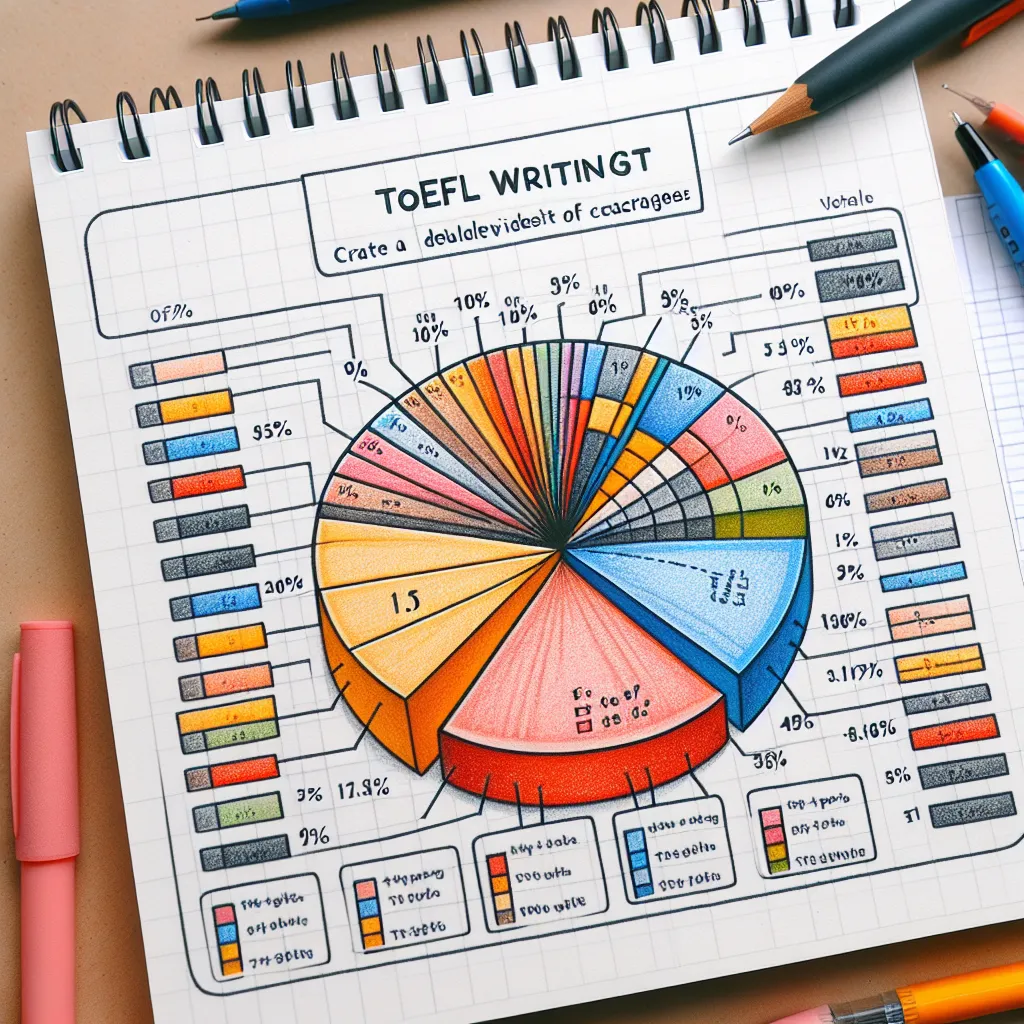Are you preparing for the TOEFL exam and feeling anxious about the pie chart questions in Writing Task 1? Don’t worry! This comprehensive guide will walk you through the essential strategies to tackle these questions effectively. As an experienced TOEFL instructor and content creator at LearnEnglish.NET, I’ll share insider tips to help you excel in this section of the test.
Understanding Pie Chart Questions in TOEFL Writing Task 1
Pie chart questions are a common feature in the TOEFL Writing Task 1, also known as the Integrated Writing Task. These questions typically present data in a circular graph, divided into segments that represent different categories or proportions of a whole. Your task is to interpret this visual information and incorporate it into your essay response.
 TOEFL Pie Chart Example
TOEFL Pie Chart Example
Why Pie Charts Matter in TOEFL Writing
Understanding pie charts is crucial for several reasons:
- Data Interpretation: Pie charts test your ability to analyze and understand numerical information quickly.
- Academic Writing Skills: They challenge you to describe data accurately using appropriate language and structures.
- Integrated Task Practice: Pie charts often appear alongside other information sources, helping you practice combining different types of input.
Key Strategies for Approaching Pie Chart Questions
1. Analyze the Chart Carefully
Before you start writing, take a few moments to examine the pie chart thoroughly:
- Identify the main topic or title of the chart
- Note the different segments and their labels
- Observe the percentages or values associated with each segment
- Look for any significant patterns or contrasts in the data
2. Organize Your Thoughts
Once you’ve analyzed the chart, organize your approach:
- Decide on a logical order to present the information (e.g., from largest to smallest segment)
- Group related segments if applicable
- Plan to highlight the most significant or interesting aspects of the data
3. Use Appropriate Language for Describing Charts
Employ specific vocabulary and phrases for describing pie charts:
- “The pie chart illustrates…”
- “X accounts for Y% of the total”
- “The largest/smallest segment represents…”
- “X is divided into Y categories”
4. Make Comparisons
Comparing different segments of the pie chart can add depth to your analysis:
- Use comparative language: “X is larger/smaller than Y”
- Highlight significant differences: “While X makes up only 10%, Y accounts for nearly half of the total”
- Combine similar categories if relevant: “The two smallest segments together represent less than 20% of the whole”
5. Integrate with Other Information
Remember, the pie chart is often part of a larger task:
- Connect the chart data to any accompanying text or audio information
- Use the chart to support or contrast with other points in your essay
- Ensure a smooth flow between different sources of information
Common Pitfalls to Avoid
When tackling pie chart questions, be wary of these common mistakes:
- Overlooking small details: Don’t ignore smaller segments; they may be significant.
- Misinterpreting percentages: Double-check your calculations if you need to combine or compare segments.
- Overcomplicating descriptions: Keep your language clear and concise.
- Neglecting the bigger picture: While details are important, don’t forget to provide an overview of the main trends or patterns.
Practice Exercises for Mastering Pie Chart Questions
To improve your skills, try these exercises:
- Timed Analysis: Give yourself 2-3 minutes to analyze a pie chart and jot down key points.
- Language Practice: Create a list of varied phrases for describing pie chart data.
- Mock Essays: Write practice essays incorporating pie chart information within the TOEFL time constraints.
- Peer Review: Exchange your responses with a study partner for feedback and discussion.
 TOEFL Writing Practice Session
TOEFL Writing Practice Session
Next Steps in Your TOEFL Preparation
Now that you’re equipped with strategies for approaching pie chart questions, consider these next steps:
- Review sample TOEFL Writing Task 1 questions that include pie charts.
- Practice integrating pie chart descriptions with other types of information.
- Time yourself regularly to ensure you can complete the task within the allotted 20 minutes.
- Seek feedback from a TOEFL instructor or experienced peer on your practice essays.
[internal_links]
By mastering these strategies and practicing regularly, you’ll be well-prepared to tackle any pie chart question that appears in your TOEFL Writing Task 1. Remember, confidence comes with preparation, so keep practicing and refining your skills. Good luck with your TOEFL journey!




